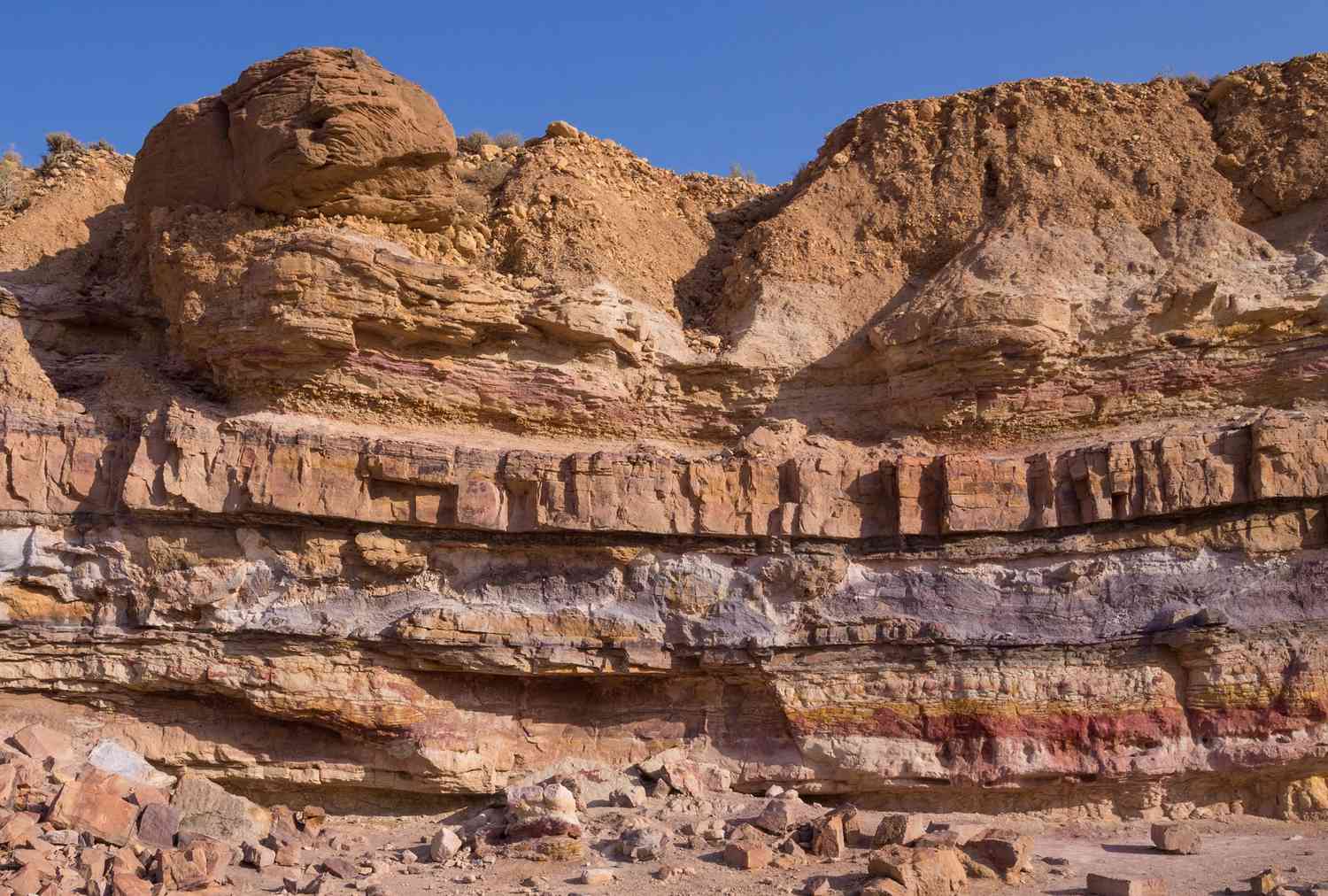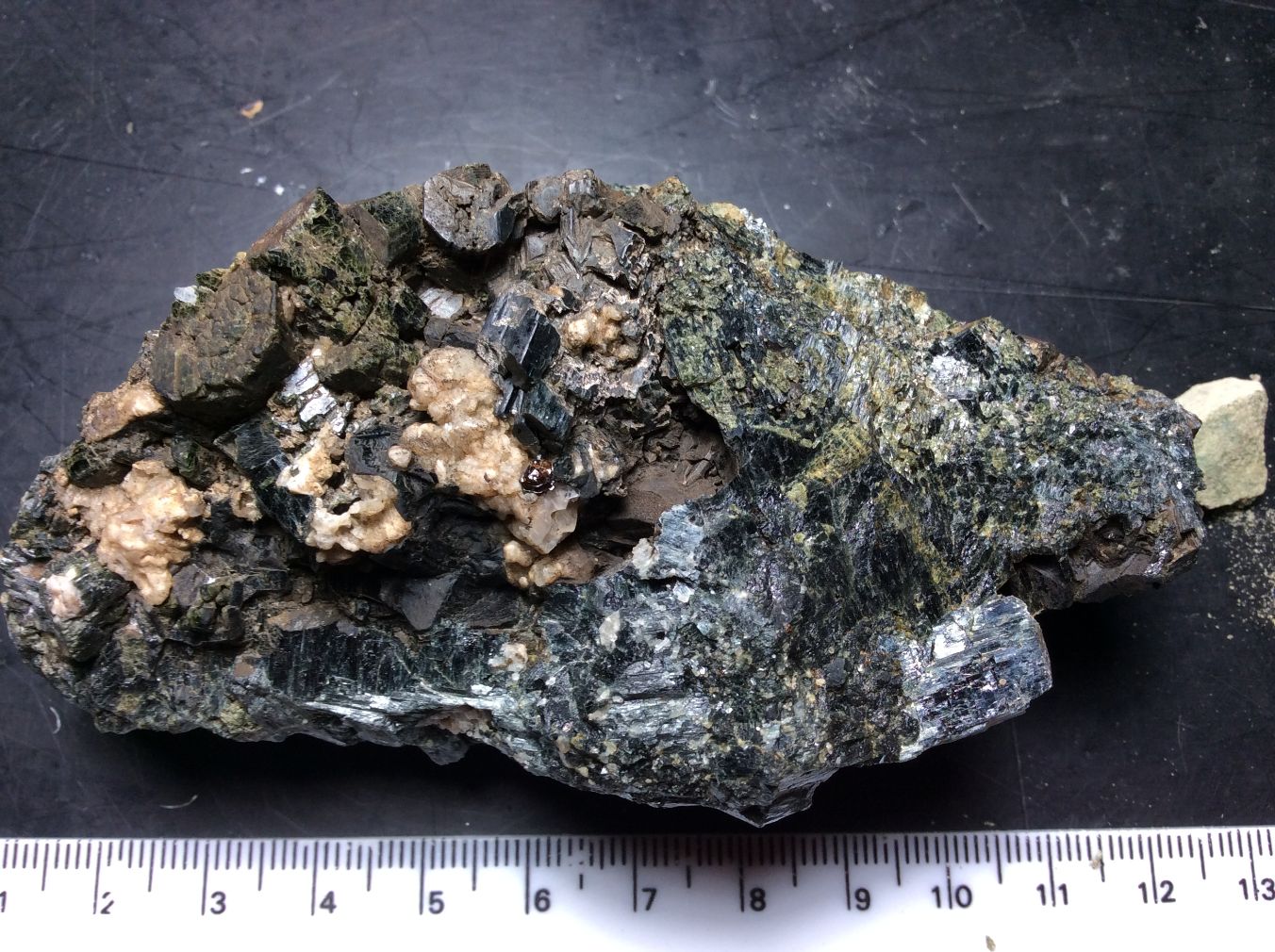
Sedimentary rock may not be the first thing that comes to mind when you think about rocks, but it plays a crucial role in the Earth’s geological history. Comprising around 75% of the Earth’s surface, sedimentary rock is formed by the accumulation of sediments over time. These sediments can include minerals, organic matter, and even fossils, making this type of rock a treasure trove of information about our planet’s past.
In this article, we will explore some surprising facts about sedimentary rock that will leave you amazed. From the incredible diversity of sedimentary rock types to its importance in fossil preservation, there’s so much more to this rock than meets the eye. So, grab your geologist’s hat and get ready to delve into the fascinating world of sedimentary rock!
Key Takeaways:
- Sedimentary rock is the most common type of rock on Earth, covering 75% of the surface. It holds fossils, tells stories through layers, and provides valuable resources for mankind.
- By studying sedimentary rock, geologists can uncover Earth’s history, understand past environments, and even unravel the mysteries of long-extinct species. Sedimentary rock truly showcases the wonders of geology.
The Formation of Sedimentary Rock
Sedimentary rock is a type of rock that forms from the accumulation and lithification of sediments. These sediments can include pieces of other rocks, minerals, plant and animal remains, and even chemical precipitates. The formation of sedimentary rock is a complex process that takes place over millions of years.
The Most Common Type of Rock
Did you know that sedimentary rock is the most common type of rock on Earth? It covers about 75% of the Earth’s surface and can be found in various environments such as rivers, lakes, oceans, and deserts.
Fossils Galore
Sedimentary rock is a treasure trove of fossils. Due to the way it forms, sedimentary rocks often preserve the remains of ancient plants, animals, and even dinosaurs! These fossils provide valuable insights into past life forms and help scientists understand the Earth’s history.
The Layers Tell a Story
Sedimentary rocks are characterized by distinct layers, known as strata. Each layer can tell a story about the past. By studying the sequence and characteristics of these layers, geologists can unravel the history of the Earth, including periods of climate change, volcanic eruptions, and even mass extinctions.
Sandstone: The Classic Sedimentary Rock
One of the most well-known types of sedimentary rock is sandstone. Formed from sand-sized grains of minerals and rock fragments, sandstone is often admired for its beautiful colors and unique textures.
The Magic of Limestone
Limestone is another fascinating type of sedimentary rock. It is primarily composed of calcium carbonate and often forms in marine environments. Limestone is used in construction, as a raw material for cement, and even as a soil amendment for agriculture.
The Power of Petrification
Petrified wood is a mesmerizing example of how sedimentary processes can turn organic materials into rock. Over time, the organic material in wood is replaced by minerals, resulting in a fossilized replica of the original tree.
The Riches of Coal
Coal, a valuable energy resource, is also a type of sedimentary rock. Formed from plant remains that underwent compaction and burial over millions of years, coal plays a major role in fueling power plants and industries worldwide.
All Shook Up
Have you ever wondered how earthquakes are recorded? Well, sedimentary rocks can provide the answer. Seismic waves from earthquakes can create distinct disturbances in the layers of sedimentary rock, helping scientists study and understand seismic activity.
Water as a Sedimentary Agent
Water plays a crucial role in the formation and transportation of sedimentary materials. Whether it’s rivers, oceans, or even underground aquifers, water acts as a powerful agent in eroding, transporting, and depositing sediments, eventually leading to the formation of sedimentary rock.
Time Traveling Through Sedimentary Rock
Sedimentary rock provides a glimpse into the past. By studying the fossils, layers, and composition of sedimentary rocks, geologists can reconstruct ancient environments, understand past climates, and even unravel the mysteries of long-extinct species.
The Resourceful Nature of Sedimentary Rock
Sedimentary rock has proven to be a valuable resource for mankind throughout history. From building materials like sandstone and limestone to the extraction of fossil fuels like coal, sedimentary rock plays a key role in various industries and our everyday lives.
The Dynamic Earth
Sedimentary rock is a testament to the ever-changing nature of our planet. It showcases the continuous cycle of erosion, deposition, and lithification that has shaped the Earth’s surface over billions of years.
The detective’s tool
Geologists often rely on sedimentary rock to uncover clues about past events. By analyzing the characteristics of sedimentary materials and the structures within them, geologists can piece together the story of Earth’s geological history.
Conclusion
In conclusion, sedimentary rock is a fascinating geological formation with many surprising facts. From its diverse composition to its role in preserving Earth’s history, sedimentary rock plays a crucial role in our understanding of the planet. Its layers hold valuable clues about past environments and the organisms that once lived. Sedimentary rocks also provide essential resources such as coal, oil, and natural gas. By studying these rocks, geologists can unlock the secrets of ancient landscapes and gain insights into Earth’s geological processes. So, the next time you come across sedimentary rock, take a moment to appreciate its hidden stories and the remarkable science behind its formation.
FAQs
Q: What is sedimentary rock?
A: Sedimentary rock is a type of rock that forms from the accumulation and cementation of sediment particles such as sand, mud, or organic material.
Q: How is sedimentary rock formed?
A: Sedimentary rock is formed through a process called lithification, which involves the compaction and cementation of sediment particles over time.
Q: What are the main types of sedimentary rock?
A: The main types of sedimentary rock include sandstone, limestone, shale, and conglomerate.
Q: How long does it take for sedimentary rock to form?
A: The time it takes for sedimentary rock to form can vary greatly, ranging from a few years to millions of years, depending on the specific conditions.
Q: What are some uses of sedimentary rock?
A: Sedimentary rock has various uses, such as building materials, fuel sources (coal, oil, and natural gas), and even as precious gemstones like diamonds.
Q: Can sedimentary rock be used to study Earth’s history?
A: Yes, sedimentary rocks are an important tool for geologists to study Earth’s history. The layers of sedimentary rock contain valuable information about past environments and the evolution of life on Earth.
Q: Are all fossil remains found in sedimentary rock?
A: Yes, most fossil remains are found in sedimentary rock because the process of sedimentation and burial is essential for preserving organic material over long periods of time.
Q: How is sedimentary rock different from other types of rock?
A: Sedimentary rock differs from igneous and metamorphic rocks because it is formed by the accumulation and lithification of loose sediment, whereas igneous rocks form from molten material and metamorphic rocks form from the transformation of existing rocks under heat and pressure.
Q: Can sedimentary rock contain clues about past climates?
A: Yes, the composition and characteristics of sedimentary rock can provide valuable information about past climates, such as the presence of certain fossils or the types of minerals present.
Q: How can sedimentary rock be useful in the oil and gas industry?
A: Sedimentary rocks, particularly shale and sandstone, often contain significant amounts of oil and natural gas. These rocks serve as reservoirs for these valuable resources and are therefore essential in the oil and gas industry.
Sedimentary rock's surprising facts merely scratch the surface of Earth's geological wonders. Unraveling the rock cycle's mysteries reveals a dynamic, ever-changing planet. Arkose, a lesser-known sedimentary rock, holds its own unique stories waiting to be discovered. Limestone, often overlooked, plays a crucial role in shaping our world and supporting life itself. Each rock type and formation process contributes to the complex puzzle that is Earth's history, inviting curious minds to explore further and appreciate the ground beneath our feet.
Was this page helpful?
Our commitment to delivering trustworthy and engaging content is at the heart of what we do. Each fact on our site is contributed by real users like you, bringing a wealth of diverse insights and information. To ensure the highest standards of accuracy and reliability, our dedicated editors meticulously review each submission. This process guarantees that the facts we share are not only fascinating but also credible. Trust in our commitment to quality and authenticity as you explore and learn with us.


